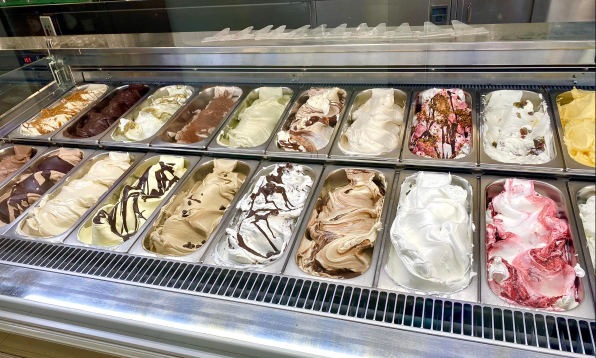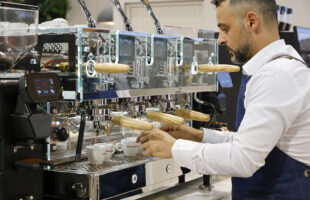
Courtesy of Mind the Pop
- From antioxidant berries to doughnuts filled with Giffoni hazelnut gelato and grandma’s recipes: the trends that triumphed in summer 2023
- IEG’s leading Artisan Gelato, Pastry, and Bakery event Observatory spoke with the great Masters from Italy, Spain, Argentina, and Australia
- Consumption growth for the recently ended season is estimated at 8% in the north of the country, +12% in Central Italy, and an average of between 16 and 20% in the South
The sun never sets on the passion for gelato, from North to South Italy, from Australia to Spain. The end-of-summer edition of Observatory Sigep, IEG – Italian Exhibition Group’s international Artisan Gelato, Pastry and Bakery trade show (Rimini Expo Centre, 20th to 24th January).
The summer continues along the length of Italy
For Claudio Pica, vice-president of Fiepet-Confesercenti Nazionale, secretary general of AIG, Italian Gelato-makers’ Association, and owner of a historic gelato parlour in Rome, “In every Italian region, highly positive numbers are registering an increase for the sector and the supply chain.” Aig estimates growth of +8 percent in Northern Italy, +12 percent in Central Italy, and an average of between 16 and 20 percent in the South, islands included. “Consumption is growing in the cities of art like Rome, Florence, Naples, Milan, Bologna, Turin, Venice and Palermo, where foreign tourism has been a driving force. In all regions, sorbet with Italian and exotic fruit and the addition of spices, have triumphed.”
Giancarlo Timballo, president of the Gelato World Cup and Master Gelato-maker from Udine, tries to sum up: “My experience and that of many gelato-parlour colleagues all over Italy, says that the summer went well; it was warm without a lot of rain. May-June were less successful but this tail end of summer is helping us and I think that the season will close at pre covid levels.” And trends? “An aware clientele stimulates us to innovate and aim for increasingly healthy products. I proposed an Aronia flavour, a berry with strong antioxidant properties.”
Rimini-born Roberto Rinaldini, a former champion of the gelato and pastry-making world, underlines: “The aim in artisan gelato is to reduce the sugar content while maintaining the special characteristics of the raw materials. Brioche and maritozzi with gelato have proved very successful for tasty afternoon snacks. Then there is the new a gelato-filled doughnut! In take-away and street food, Sicilian granita with fresh fruit, coffee and almonds are going strong. Success also for vegan pistachio: the fat component is only in the fruit and there is no cream and milk.”
Domenico Belmonte, a master gelato maker from Castellabate in Cilento, confirms: “We slowed down in May/June, but there should be a good comeback in September and October. As for flavours, we successfully launched one with Giffoni hazelnuts and honey-roasted almonds, but classic flavours are always in high demand.”
Gelato in a starring role also across the border
Following the international development of the event, Observatory Sigep by IEG also surveyed other countries where Italian artisan gelato has a strong hold.
Martino Piccolo, gelato-maker in Australia, recalls how “artisan gelato is very popular, especially with the large Asian public in Oceania and in the more touristy areas. Customers like to taste the “limited edition” flavours. But even in Australia, the most popular flavours are the “classic” ones.”
For Marco Miquel, president of the Asociación Nacional Heladeros Artesanos de España, “The Spanish gelato tradition has been reinvented, and gelato parlours are experiencing an unprecedented boom.” Madrid, Barcelona, Valencia, and Seville are seeing a significant increase in supply, and many gelato parlours are collaborating with local producers for their ingredients, aiming at greater sustainability. “A rebirth,” Miquel continues, “That is the result of researching authentic flavours that recall grandmother’s recipes, nostalgia. Such as Turrón de Jijona, chocolate, and vanilla.”
Maximiliano Maccarrone, president of AFADHYA (Artisan Gelato Producers’ Association, Argentina), goes even further. “Artisan gelato is part of Argentinian culture like meat, wine, and the tango: they identify the country and their consumption habits. The data show that 9 out of 10 Argentines consume artisan gelato throughout the year. The annual per capita consumption is now 7 kilos, and there are around 3,500 artisan gelato parlours throughout the country. Among the favourite flavours: chocolate with almonds, sambayón (zabaglione), dulce de leche, and red fruits.








